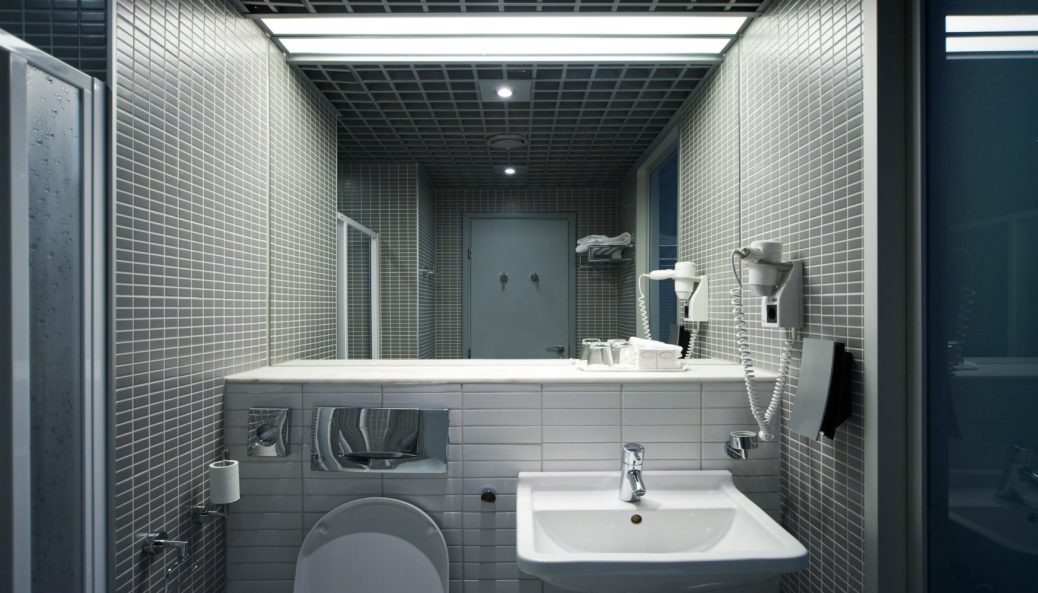Mirrors have often been used in interior decoration to make a room look bigger, tie the rest of the decor together, or create a point of interest—all without sacrificing usefulness. Bathroom mirrors can do the same, albeit in a more private area of the house.
While most blemishes on a mirror’s surface are easy to clean, there’s one in particular that often proves more of a challenge. If you’ve ever picked up an antique mirror, you may have noticed several dark spots running along the edge of the glass. These dark spots are caused by “mirror rot”, or “desilvering.”
Unfortunately, even the most well-kept bathroom mirrors can develop them over time.
When these dark spots develop, they usually start out as little more than an eyesore you can hide with a strategically-placed indoor plant or a similar decorative fixture. However, you don’t want the dark areas to spread because, once they do, they’ll start to obscure a larger part of your reflection. They’ll go from being an eyesore to a nuisance.
What causes mirror rot in the first place?
Well, it happens when the protective coating at the back of the mirror gets exposed to various elements like air, cleaning solutions, and moisture. Without the protective coating, the silver nitrate responsible for turning plain glass into mirrors starts chipping away. Since moisture is one of the culprits that causes this mirror rot, it’s easy to see why bathroom mirrors are more susceptible.
Given that, here are some preventive measures you can take to keep black spots on bathroom vanity mirrors at bay.
1. Use a custom frame.
 Maybe you went with a frameless mirror so your bathroom has a certain look to it. If you can’t find a framed mirror that fits your desired theme, you can always add a custom frame. And if you can’t find something at a home improvement store that fits any of the bathroom mirror ideas you had in mind, there are always several options online.
Maybe you went with a frameless mirror so your bathroom has a certain look to it. If you can’t find a framed mirror that fits your desired theme, you can always add a custom frame. And if you can’t find something at a home improvement store that fits any of the bathroom mirror ideas you had in mind, there are always several options online.
Adding a frame helps keep the edges from being exposed further to air and moisture, preventing more mirror rot and simultaneously enhancing the bathroom’s visuals.
2. Tape some desiccant to the back.
You know those little packets of desiccant that come with certain packaged food and products such as shoes? Tape one to the back of the mirror to absorb any excess moisture that makes its way there. If the mirror is quite big, you can tape one bag to each corner.
3. Take precautions to keep the mirror moisture-free.
While this isn’t 100% guaranteed to prevent mirror rot, it does help. You simply need to be careful when brushing your teeth or washing your hands and face while near the mirror. As much as possible, keep water in the sink and dry the mirror immediately if it does get splashed—especially near the edges.
What if dark spots still show up on your mirror despite the steps you’ve taken to prevent them?
Fortunately, they’re reparable. For instance, you can stick pieces of aluminum foil to the back of the mirror where the coating has flaked off, or use a mirror-like spray paint on those areas.
However, if you’re dealing with more extensive damage to your bathroom mirrors, don’t hesitate to call a professional. Restoring the mirror, or resilvering, involves the use of toxic chemicals, so it can get pricey. But shelling out for a professional job is a better alternative than replacing the mirror each time desilvering happens, or opting for the DIY route and risking your health in the process.

